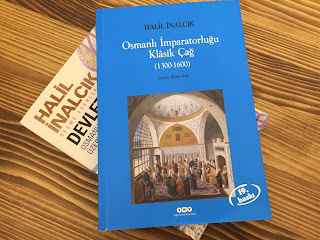The Ottoman Empire, founded by Osman I (r. 1290-1326), dominated much of southeastern Europe, the Middle East, and North Africa between the fourteenth and early twentieth century.
In the early centuries the Ottomans effectively used siege weapons and artillery, such as mortars, catapults, and large cannons, that fired both iron and stone shot. Mehmed II, also called Mehmed the Conqueror, wished to have the most modern weapons and ordered a Hungarian gunsmith to build him large cannons, one of which was used at Constantinople, that could fire 1,200-pound cannonballs.
Janissaries used scimitars, knives, stabbing swords, battle-axes, and harquebuses. Their adoption of firearms as their weapons of choice must have occurred sometime before the 1449 Battle of Kossovo Polje, making them the first elite battle-winning infantry unit in Europe to adopt gunpowder weapons as their weapon of choice.
The Janissaries were firing their weapons row-by-row from the early 16th century. It seems, however, that Janissaries started to use volley fire of the West European type only in the1590s.
Gunpowder played a crucial role in the Ottomans' conquest of Constantinople in 1453. The Turks were also skilled marksmen using muskets.
Weaponry of the Ottoman Empire
In the early centuries the Ottomans effectively used siege weapons and artillery, such as mortars, catapults, and large cannons, that fired both iron and stone shot. Mehmed II, also called Mehmed the Conqueror, wished to have the most modern weapons and ordered a Hungarian gunsmith to build him large cannons, one of which was used at Constantinople, that could fire 1,200-pound cannonballs.
Janissaries used scimitars, knives, stabbing swords, battle-axes, and harquebuses. Their adoption of firearms as their weapons of choice must have occurred sometime before the 1449 Battle of Kossovo Polje, making them the first elite battle-winning infantry unit in Europe to adopt gunpowder weapons as their weapon of choice.
The Janissaries were firing their weapons row-by-row from the early 16th century. It seems, however, that Janissaries started to use volley fire of the West European type only in the1590s.
Gunpowder played a crucial role in the Ottomans' conquest of Constantinople in 1453. The Turks were also skilled marksmen using muskets.
Weaponry of the Ottoman Empire
















